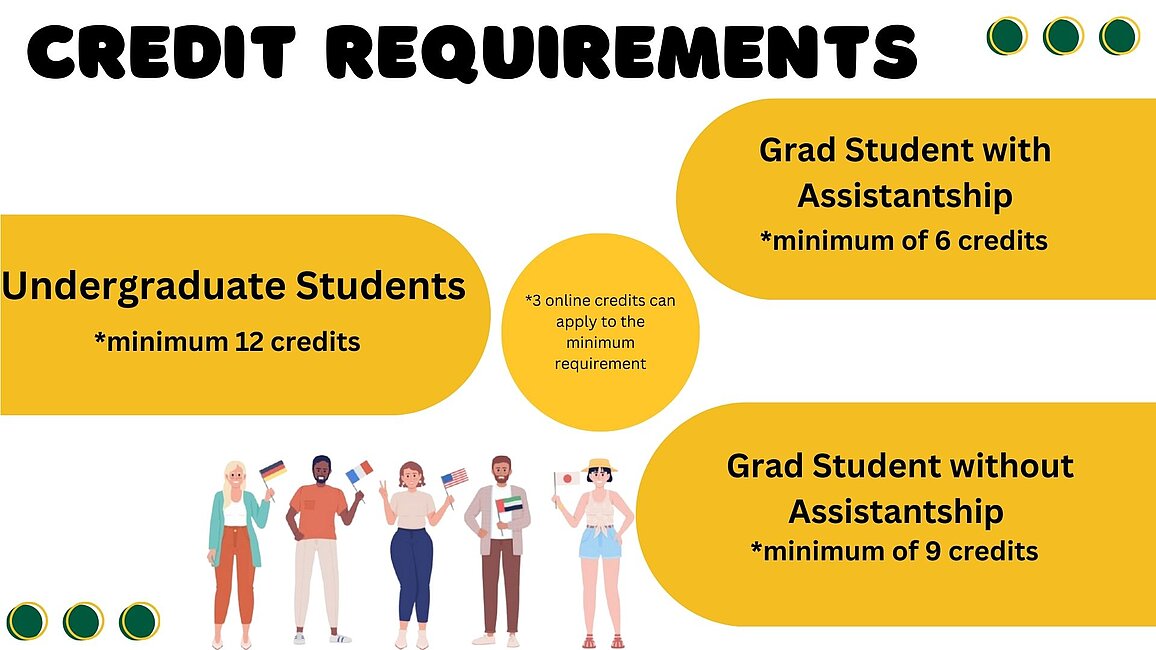Credit Minimums: Maintaining Your Immigration Status
Overview
F-1 and J-1 international students must maintain a specific minimum credit load each semester in order to maintain immigration status. Falling below these minimum requirements can lead to a student falling out of status and the termination of their I-20/DS-2019. Students in other visa statuses have no minimum number of credits to maintain status - however, please note students in F-2 status are only allowed part-time enrollment. For questions regarding this, please consult with your international student advisor in the ISSAS office.



